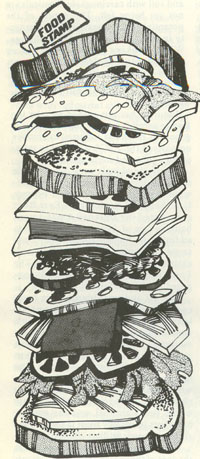
ILLINOIS had the highest error rate in eligibility determination (51.5 per cent) for the Food Stamp Program of any state in the country, according to a special report released by the U.S. Treasury Department in October 1975. When asked to comment, James L. Trainer, former director of the Illinois Department of Public Aid (IDPA), which administers the program, said in a Chicago Sun Times story on October 29, 1975: "I'm afraid the only response that I can make is in four letter words. It's a lot of nonsense, but nothing the USDA [United States Department of Agriculture] or the Feds do on this surprises me anymore." He added that the reporting requirements are "Mickey Mouse and stupid" and made it impossible to run an "effective program."
Just a month later, Richard L. Feltner, an assistant secretary in USDA, was asked about problems in the Illinois Food Stamp Program. He was quoted by the State Journal-Register December 4, 1975, as saying: "The federal government may withhold funds from the Illinois Food Stamp Program to recover money lost when the state issued stamps to ineligible persons .... There is no workable club to hold over the states to make them want to do a good job."
The obvious anger and frustration of the state and federal officials who made these comments grow out of a long and tangled history of government regulations, fraud, computer deficiencies and court decisions. This program is snarled in bureaucracy. Behind this snarl stand two pressing questions that desperately need answers: (1) What went wrong with the Food Stamp Program in Illinois? (2) What can be done to solve these problems?
Illinois, like other states with large welfare programs, was caught in the crunch: escalating enrollments, overloaded welfare offices, anemic state administration and a national crackdown on fraud and error. To understand the current problems of the Illinois Food Stamp Program, it is first necessary to look at the 1971 effort of Congress to establish uniform benefits across the nation. Up to then, each state used its own public assistance formula for food allowances to calculate each household's food coupon allotment. As a result, the federal government had difficulty adjusting benefit inequalities